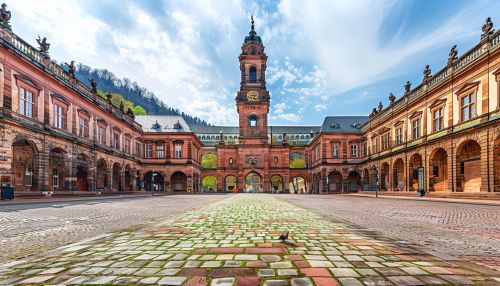University of Heidelberg
History
The Heidelberg University, officially known as Ruprecht-Karls-Universität Heidelberg, is a public research university located in Heidelberg, Germany. It is the oldest university in contemporary Germany and the third university established in the Holy Roman Empire. The university was founded in 1386 by Rupert I, Elector Palatine, under the auspices of Pope Urban VI. The university played a key role in the era of humanism and the Reformation, and its history is closely associated with the development of the city of Heidelberg.


Structure and Organization
The University of Heidelberg is a comprehensive university, offering a wide range of disciplines from humanities to natural sciences. The university is divided into twelve faculties, including Theology, Law, Medicine, Philosophy, Modern Languages, Economics and Social Sciences, Behavioural and Cultural Studies, Mathematics and Computer Science, Chemistry and Earth Sciences, Physics and Astronomy, Biosciences, and Clinical Medicine. Each faculty is responsible for its research and teaching activities, and they are further divided into departments and institutes.
Research
Heidelberg University is renowned for its research contributions in various fields. It is a member of the Coimbra Group, the European University Association, and the League of European Research Universities. The university's research strength lies in the fields of oncology, cardiovascular research, molecular biology, neuroscience, environmental physics, and archeology, among others. The university operates several collaborative research centers and hosts numerous individual research projects funded by the German Research Foundation.
Academics
The University of Heidelberg offers a wide range of degree programs at undergraduate, graduate, and postgraduate levels. The university follows the Bologna Process, offering Bachelor's, Master's, and Doctorate degrees. The medium of instruction is primarily German, but several courses are offered in English, especially at the graduate level. The university also offers a variety of international programs and has partnerships with numerous universities worldwide.
Campus
The university's main campus is located in the old town of Heidelberg, with several buildings spread across the city. The university library, one of the most important academic libraries in Germany, is also located on the main campus. The university's medical campus is situated in the Neuenheimer Feld area, along with several research institutes and the University Hospital Heidelberg.
Student Life
Heidelberg University has a vibrant student life, with numerous student organizations, clubs, and societies. The university's students' union, known as the Studierendenwerk, provides a range of services including housing, dining, and counseling. The university also offers a variety of sports and recreational activities through the University Sports Club.
Notable Alumni and Faculty
The University of Heidelberg has been associated with 56 Nobel laureates, numerous Leibniz Prize winners, and several Fields Medalists. Notable alumni and faculty include Max Weber, a founding figure of sociology; Robert Bunsen, the developer of the Bunsen burner; and Jürgen Habermas, a prominent philosopher and sociologist.
